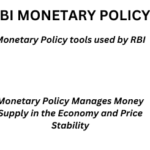PM e-bus sewa: Basics Explained

On Wednesday The union cabinet approved ‘PM-eBus Sewa’ under which 10,000 e-buses, on Public Private Partnership (PPP) model, will be deployed across cities, with 3 lakhs and above population, in the country which will also augment city bus operation. This scheme will support bus operations for 10 years and priority will be given to cities not having organised bus services.
e-buses will be deployed on public-private partnership (PPP) model in 169 cities.
Associated Infrastructure will provide support for Development/ up-gradation of depot infrastructure; and Creation of behind-the-meter power infrastructure (substation, etc.) for e-buses.
Infrastructure also will be upgraded in 181 cities under the Green Urban Mobility Initiatives.
Green initiatives like bus priority, infrastructure, multimodal interchange facilities, NCMC-based Automated Fare Collection Systems, Charging infrastructure, etc.
Under the scheme, States/Cities shall be responsible for running the bus services and making payments to the bus operators. The Central Government will support these bus operations by providing subsidy to the extent specified in the proposed scheme.
The scheme will promote e-mobility and provide full support for behind-the-meter power infrastructure.
Cities will also be supported for development of charging infrastructure under Green Urban Mobility Initiatives.
The support to bus priority infrastructure shall not only accelerate the proliferation of state-of-the-art, energy efficient electric buses but also foster the innovation in the e-mobility sector as well as development of resilient supply chain for electric vehicles.
This scheme shall also bring in economies of scale for procurement of electric buses through aggregation for e-buses.
Adoption to Electric mobility will reduce noise and air pollution and curb carbon emission.
Modal shift due to increased share of bus-based public transportation will lead to Green House Gas reduction.
The government has started scheme titled ‘Faster Adoption and Manufacturing of Electric Vehicles(FAME) in India with a goal of reaching 30% EV penetration by 2030. The main objective of the scheme is to encourage Faster adoption of Electric and hybrid vehicle by way of offering upfront Incentive on purchase of Electric vehicles and also by way of establishing a necessary charging Infrastructure for electric vehicles. The scheme will help in addressing the issue of environmental pollution and fuel security. Establishment of Charging stations are also proposed on major highways connecting major city clusters.
Various fiscal demand incentives have been put in place to spur the production and consumption of EVs and charging infrastructure – such as income tax rebates of up to INR150,000 for customers on interest paid on loans to buy EVs. To scale production of lithium-ion cell batteries, there will be an exemption from customs duties to bring down their cost.
Ministry of Power has clarified that charging EVs is considered a service, which means that operating EV charging stations will not require a license. It has also issued a policy on charging infrastructure to enable faster adoption of EVs.
Ministry of Road Transport and Highways has announced that both commercials, as well as private battery-operated vehicles, will be issued green license plates. It has also notified that all battery-operated, ethanol-powered, and methanol-powered transport vehicles will be exempted from the commercial permit requirement.
On such highways, charging stations will be established on both sides of the road at an interval of about 25 km each.
CHALLENGES
Low Rang and the absence of charging infrastructure.
The repair and maintenance network of Electric Vehicle is sparse.







0 Comments